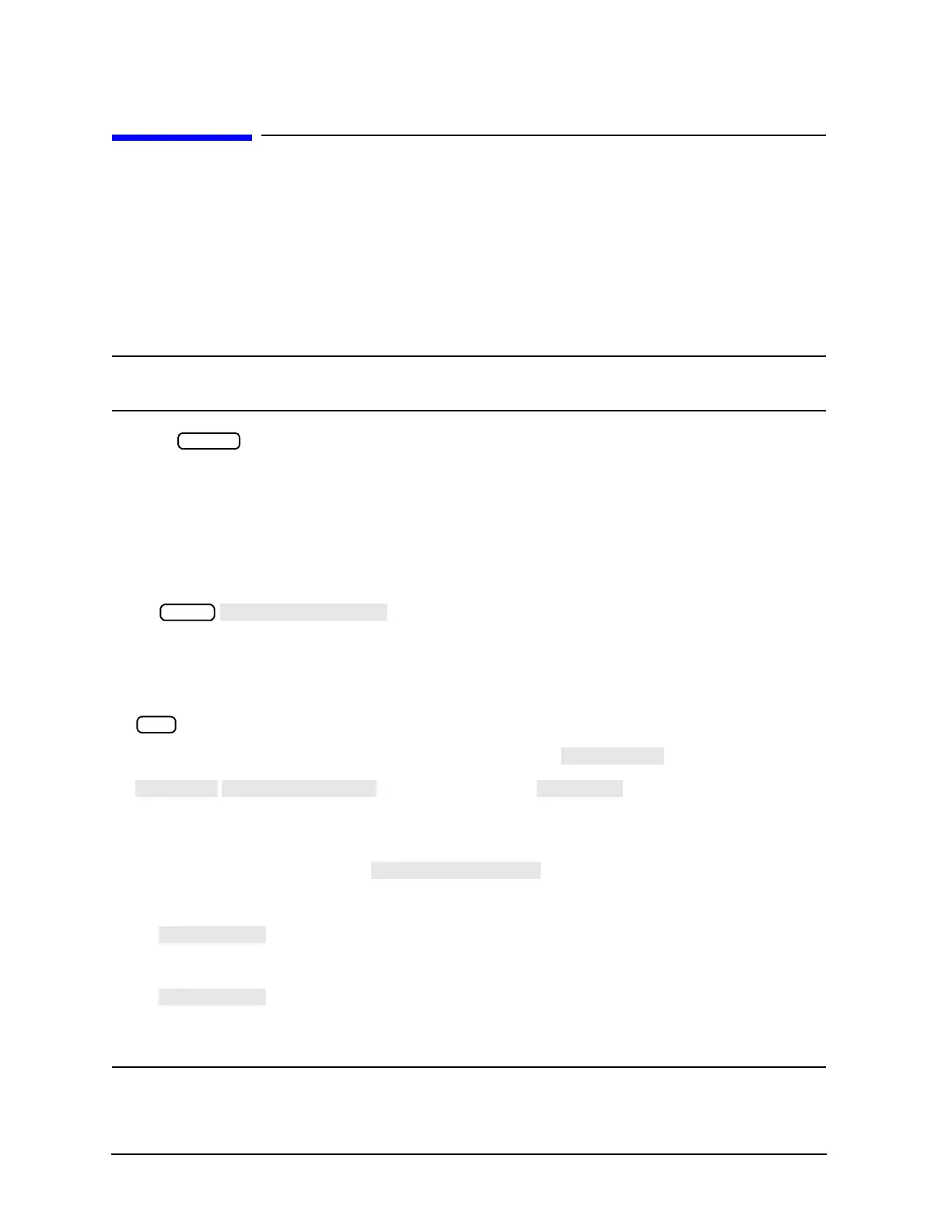6-26
Calibrating for Increased Measurement Accuracy
One-Port Reflection Error Correction
One-Port Reflection Error Correction
• removes directivity errors of the test setup
• removes source match errors of the test setup
• removes frequency response of the test setup
You can perform a 1-port correction for an S
11
or an S
22
measurement for ES analyzers. The only difference
between the two procedures is the measurement parameter that you select.
NOTE This is the recommended error correction process for all reflection measurements, when full
two-port correction or enhanced response calibration is not used.
1. Press .
2. Select the type of measurement you want to make.
❏ If you want to make a reflection measurement on PORT 1 (in the forward direction, S
11
), leave the
instrument default setting.
❏ For ES analyzers, if you want to make a reflection measurement on PORT 2 (in the reverse direction,
S
22
), press:
3. Set any other measurement parameters that you want for the device measurement: power, number of
points, IF bandwidth.
4. To access the measurement correction menus, press:
5. If your calibration kit is different than the kit specified under the softkey, press:
(select your type of kit)
If your type of calibration kit is not listed in the displayed menu, refer to "Modifying Calibration Kits" on
page 7-57.
6. To select the correction type, press and select the correction type.
❏ If you want to make a reflection measurement at PORT 1, press:
❏ For ES analyzers, if you want to make a reflection measurement at PORT 2, press:
7. Connect a shielded open circuit to PORT 1 (or PORT 2 for an S
22
measurement).
NOTE Include any adapters that you will have in the device measurement. That is, connect the
calibration standard to the particular connector where you will connect your device under

